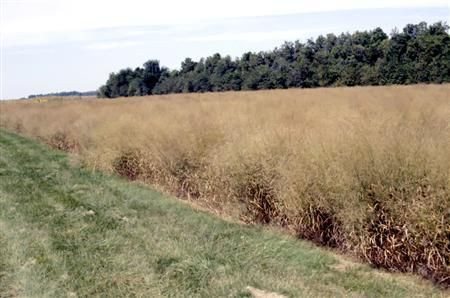Switchgrass And Microbes Eliminate PCBs From Soils, Ecologists Find

A tall grass that thrives in remaining prairies can be used to decontaminate soil polluted with chemicals used in industries more than 50 years ago. University of Iowa (UI) scientists have tested the ability of switchgrass to cleanse soil from polychlorinated biphenyls (PCBs) contamination. Grass growth also supported the survival of PCB-oxidising microorganisms in polluted soils.
In the lab experiments, soil grown with switchgrass showed a 40 percent reduction in PCB contamination. The addition of LB400 bacteria, an aerobic PCB-oxidising microorganism, boosted decontamination to 47 percent. Soil samples were analysed on the third and sixth month after the onset of the experiment. The combination of switchgrass and the LB400 bacteria enhanced the elimination of these intractable compounds from the soil samples.
The finding suggests the efficiency of using of these natural resources in removing toxic chemicals from degraded lands. Tim Mattes, UI professor and co-author of the study, is now conducting more studies on this to determine which microorganisms in the roots area contribute to PCB reduction. Prior studies on the potential uses of switchgrass have led to many applications such as production of bioenergy, feedstock, and soil conservation.
This tall prairie grass can be grown in soil that readily erodes or on land unsuited for crop production as it does not require a special technique for seeding. These qualities and the results of the study make switchgrass a good alternative for phytoremediation. This research was recently published in the journal Ecological Engineering.
Fast-track industrialisation in the United States prompted the use of PCBs since 1929 until its ban in 1979. Adverse effects on the soil, groundwater and organisms on land and seas persist until present. PCBs in the environment do not easily disintegrate and can be released to other distant areas, according to the US Environmental Protection Agency. In fact, traces of PCBs were observed in marine animals and continue to threaten the environment, oceans and human health.
Removing contaminants in polluted land may require costly methods like excavation and land filling. Phytoremediation or using plants to remove toxic chemicals is an efficient, natural and economical technique of reversing environmental damage. The complementation of microbial activity or bioaugmentation makes the decontamination effort more effective.
To send feedback about the content, email: jm_panganiban@hotmail.com





















